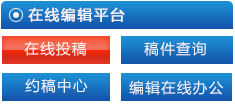临床护理
心理护理在急性闭角型青光眼患者中的作用
周阳阳
【摘要】 目的 探究心理护理模式应用于急性闭角型青光眼患者护理中对其行为、认知以及心理状态的影响。方法 本研究选取2017年6月至2018年12月时间段到我院就诊的62例急性闭角型青光眼患者为此次研究的研究对象。以不同的护理方式将其分为参照组(共30例,采取常规护理)和护理组(共32例,采取心理护理)。通过汉密顿焦虑量表(HAMA)以及汉密顿抑郁量表(HAMD)分别两组研究对象心理状态进行评分并对比,同时对比两组对疾病的认知、依从情况以及生活质量。
【关键字】 心理护理,急性闭角型青光眼,心理状态,生活质量
中图分类号:文献标识码:文章编号:
[Abstract] Objective To explore the effect of psychological nursing mode on behavior, cognition and mental state of patients with acute angle closure glaucoma. Methods In this study, 62 patients with acute angle-closure glaucoma who visited our hospital from June 2017 to December 2018 were selected as the subjects of this study. According to different nursing methods, they were divided into the reference group (a total of 30 cases, taking routine care) and the nursing group (a total of 32 cases, taking psychological care). The mental states of the two groups of research subjects were scored and compared by the Hamilton Anxiety Scale (HAMA) and Hamilton Depression Scale (HAMD), and the two groups’ cognition, compliance and quality of life were compared at the same time. Results Before nursing, there was no significant difference in the mental state of the two groups of patients (P>0.05). After nursing, the HAMA score and HAMD score of the nursing group were lower than those of the reference group (P<0.05). The awareness rate of the clinical features, prevention and treatment of the disease in the nursing group was significantly higher than that in the reference group (P<0.05). The compliance rate of the nursing group (93.75%) was significantly higher than that of the reference group (66.67%) (P<0.05). Before nursing, there was no significant difference in the quality of life between the two groups (P>0.05). After nursing, the scores of various quality of life indicators in the nursing group were significantly higher than those in the reference group (P<0.05).
急性闭角型青光眼是眼科常见的疾病之一,主要是由人体前房角突然关闭造成的眼压急剧升高现象,引起急性闭角型青光眼的原因是因为房水流出通道堵塞,造成堵塞的原因则是眼部的前房角狭窄。急性闭角型青光眼多发于四十岁以上女性群体,病情发展较快,患者会有不同程度的眼痛、发热、恶心呕吐等症状,还会感觉到头晕,视力也会大幅度出现下降的情况,最低会到0.1,而且还是在很短的时间之内。如果未及时接受治疗,可能会影响眼部功能,但目前该疾病的发病机制还未明确,为临床有效治疗带来了阻碍[1-2]。临床治疗该疾病原则上先把眼压控制住再做手术,如果眼压控制不住的可以做前房穿刺,再降眼压,如果眼压控制不住,也可以做手术,但手术风险会稍微大点,因此大部分患者伴随不同程度的心理障碍,影响治疗效果。为更好的改善病情,需给予有效的心理护理干预[3]。基于此,本文选择62例急性闭角型青光眼患者作为研究对象,探究心理护理模式应用于急性闭角型青光眼患者护理中的临床效果,为临床护理提供参考意见。
1 资料与方法
1.1 一般资料 本研究选取2017年6月至2018年12月时间段到我院就诊的62例急性闭角型青光眼患者作为研究对象,以不同的护理方式将其分为参照组和护理组。参照组30例,其中男性患者11例、女性患者19例,年龄在36~78岁,平均年龄为(62.21±7.11)岁;病程0.5~4 d,平均(2.91±0.85)d;眼压45.3~92.1 mm Hg,平均(71.46±4.46)mm Hg;其中左眼发病患者14例、右眼发病患者16例;视力<0.5的患者21例、视力≥0.5的患者9例。护理组32例,男性患者14例、女性患者20例,年龄在39~77岁,平均年龄为(62.15±7.06)岁;病程1~5 d,平均(2.98±0.81)d;眼压48.5~90.5 mm Hg,平均(71.02±4.37)mm Hg;其中左眼发病患者15例、右眼发病患者17例;视力<0.5的患者22例、视力≥0.5的患者10例。两组研究对象的年龄、性别、病程、眼压等基本资料对比保持均衡性(P>0.05),提示具有可比性。知情同意并签署知情同意书,本研究已获得我院伦理委员会的批准。



